YOU ARE LEARNING:
Structure of the Solar System
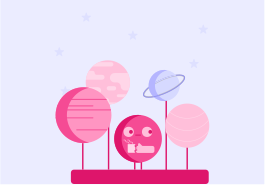
Structure of the Solar System
Our Solar System consists of the Sun, eight planets and their moons, dwarf planets, asteroids and comets.
The universe contains hundreds of billions of galaxies. One of them is the Milky Way. What do galaxies consist of?
A) A few hundred stars B) Hundreds of billions of stars C) One star at the centre
Answer A, B or C.

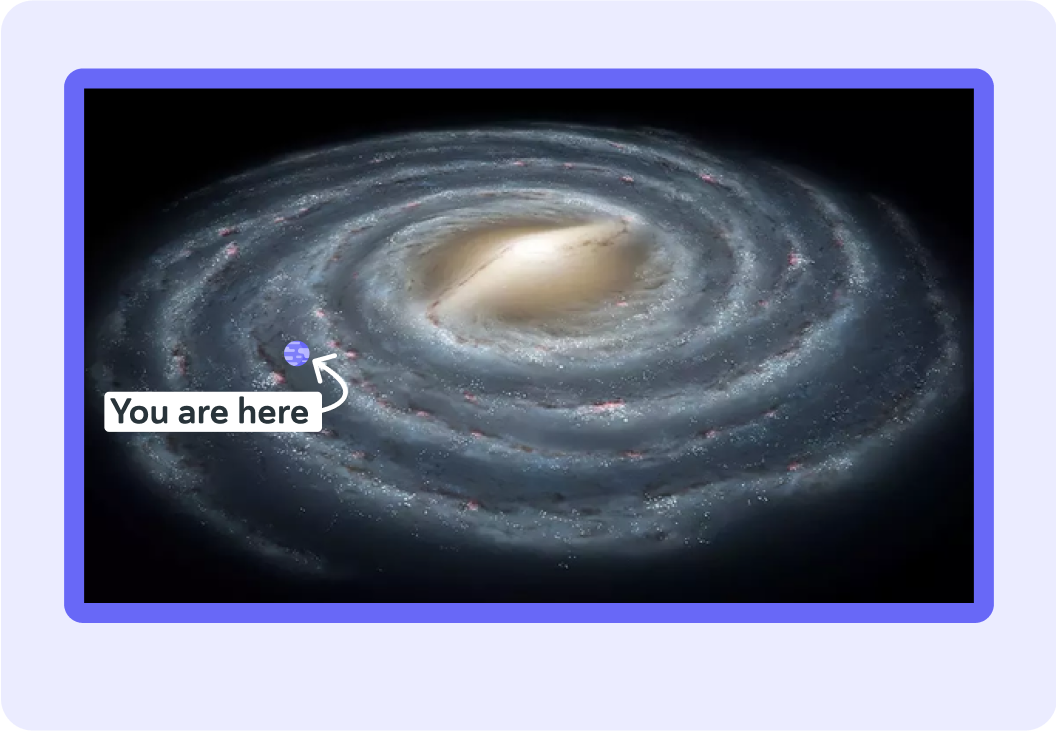
This image shows the Milky Way
It is a galaxy that contains hundreds of billions of stars. Our Sun is just one of these stars.

A system where planets orbit around a star, we call a _______ ________.


Every star in the universe has its own solar system, consisting of objects orbiting around it
This lesson looks specifically at our own solar system.

First, a recap how our Sun was created.
Our Sun is a relatively small main sequence star. It was created 4.6 billion years ago. What did it start off as?

The gravity of the mass of this nebula eventually caused it to condense
Particles started colliding and it formed a core full of internal and thermal energy that we call a protostar.
When this protostar got hotter and denser, what began in its core?

The nuclear fusion of hydrogen in the core of the protostar produced energy that made the star bigger and hotter
Now the Sun had become a main sequence star, **** and the forces in it are balanced - Gravity pulls inwards, and radiation pressure from the nuclear reactions pushes outwards.
The gravitational pull of the Sun caused other objects to begin orbiting it. Which of these objects are part of our solar system? Pick all the options you think are correct.

You can select multiple answers
This is a diagram of our solar system. Do you think it's 100% to scale? Answer yes or no.

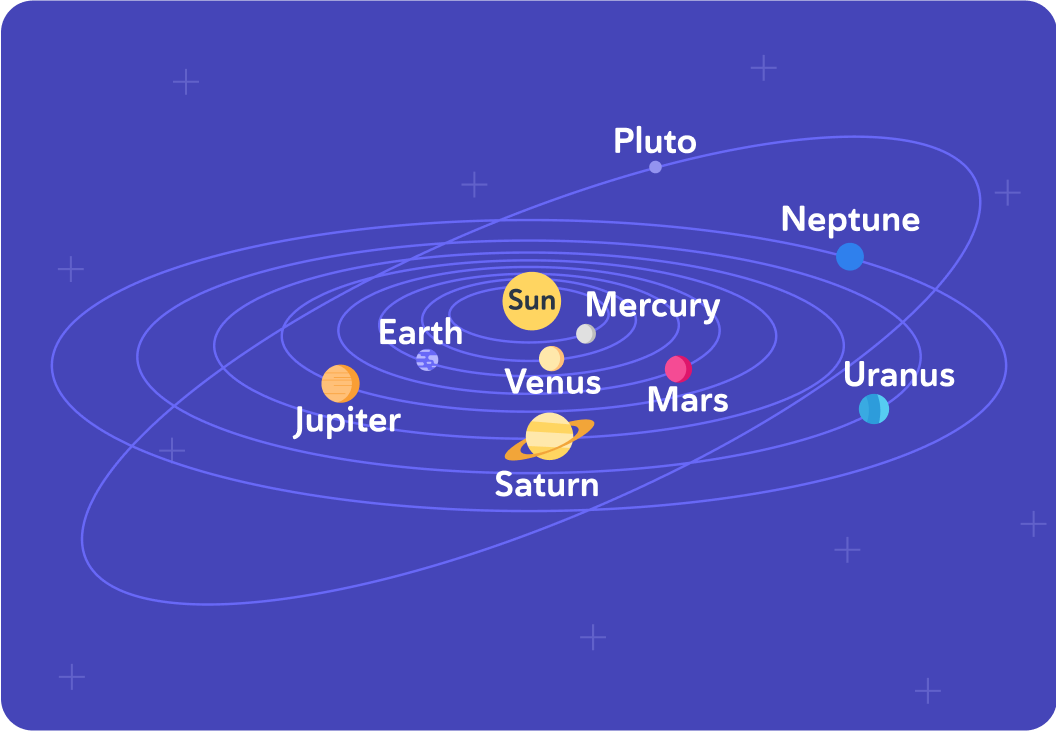
Most diagrams and pictures you will see of our solar system are not to scale
The sizes of the planets are super tiny compared to the Sun and the distances between them are extremely large. We can't really draw a picture that takes all of that into account and that is still useful.

Trick question! How many planets are there?


Many people grew up learning that there are 9 planets in our solar system
But in fact, Pluto was officially classified as not a planet in 2006.

Which planet is the closest to the Sun?


Which planet is number 3 from the Sun?


Which is the planet furthest away from the Sun?


Which of these planets do you think is hotter?
A) Venus B) Earth C) Neptune


The closer a planet is to the Sun, the hotter it will be
So the hottest planet is Mercury at 430°C, and the coldest planet is Neptune at -200°C.

This shows the order of the planets from the Sun
Mercury, Venus, Earth, Mars, Jupiter, Saturn, Uranus and Neptune.
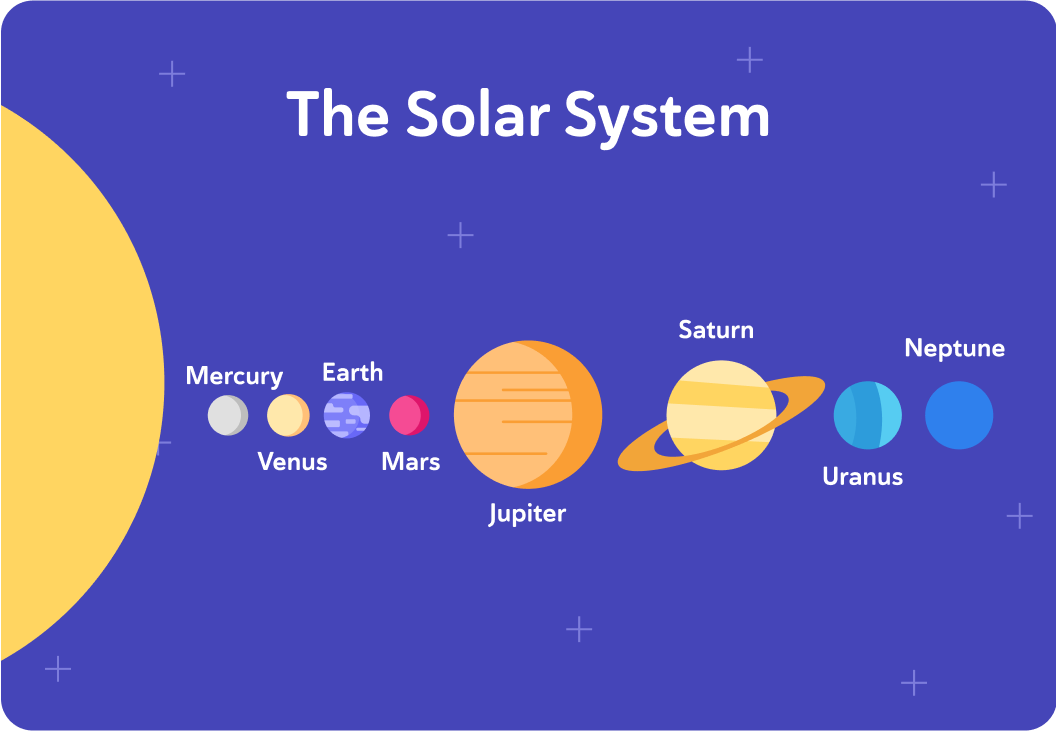
The four planets that are closer to the Sun are also...
A) the smaller planets. B) the larger planets.


Mercury, Venus, Earth and Mars are solid, rocky planets
Jupiter, Saturn, Uranus and Neptune are much larger and they are not solid in the same way.

The further away from the Sun a planet is, the ___________ it will take that planet to complete an orbit.
A) shorter B) longer


Planets closer to the Sun have much smaller orbits than planets further away from the Sun
For example, Mercury orbits the Sun once every 88 days, whereas Neptune takes 165 days to orbit the Sun.

Dwarf planets
Further out than Neptune, the Solar System contains hundreds of smaller "planets", like Pluto
We call them dwarf planets because they are really really small.
So how do we define a planet?
Planets orbit stars. They are massive enough that their own gravity has given them a round shape, but they are not massive enough to cause thermonuclear fusion (like inside the Sun). Also planets have cleared their region of space so that there are no other objects in their orbit around the Sun.
And how do we define a dwarf planet?
A dwarf planet is made up of planetary mass, but it has not cleared its orbit around the Sun of other objects. However, it is not a satellite, like a moon that is "stuck" in a planet's orbit.
Moons
How many moons does Earth have?

Most of the planets in the solar system have at least one moon
Some planets have many moons. For example, Saturn has more than 50!
Moons are natural satellites
That means that they orbit a planet.
Asteroids
Where can we find asteroids?

What do you think asteroids are made of?

So asteroids are smaller objects in the Solar System made of rocky material and metal
We find them in the Astroid Belt between Mars and Jupiter and also further out that Neptune in a region called the Kuiper Belt. They orbit the Sun in very elliptical orbits that can take millions of years to complete.
Comets
What does a comet look like?

What do you think comets are made of? It is not exactly the same as asteroids.

Why do comets have a distinctive tail?
As a comet approaches the Sun, the ice on it vaporises - it turns into a gas. That is what we see as a tail on the comet.
To sum up, our Solar system consists of...
One star (the Sun), 8 planets, lots of moons, and many dwarf planets, asteroids and comets.
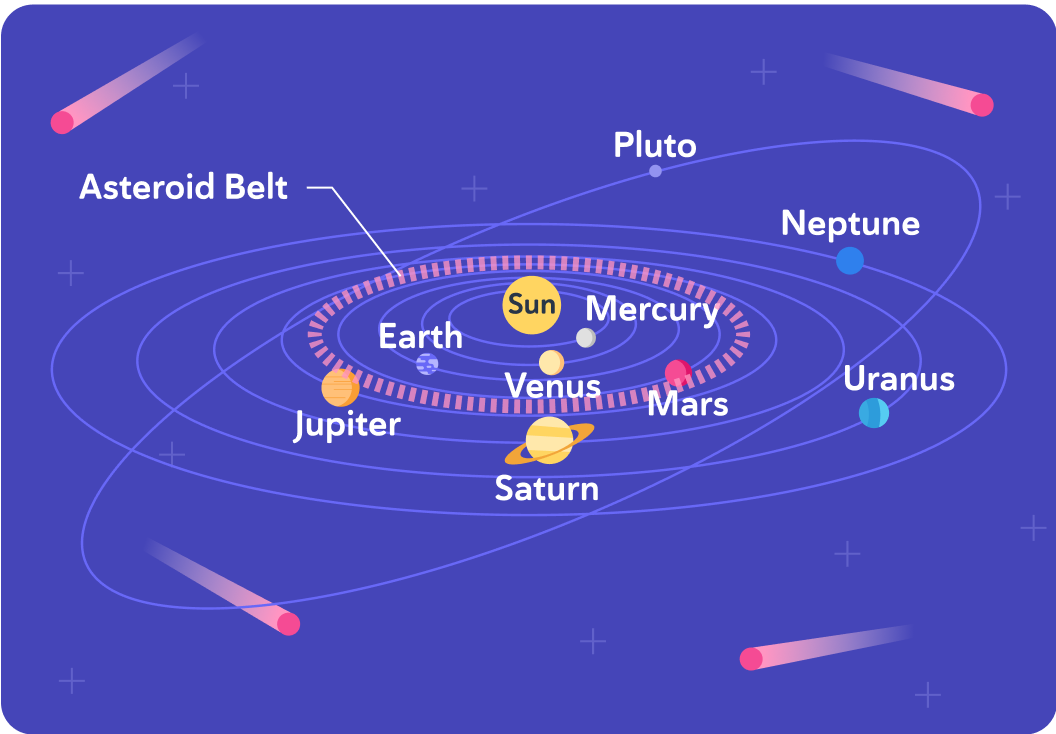
In order of closeness to the Sun, the 8 planets are Mercury, Venus, Earth, Mars, Jupiter, Saturn, Uranus, and Neptune
The closer a planet is to the Sun the hotter it is and the quicker it is to complete an orbit.

Dwarf planets are not planets
Planets have strong gravity and they have cleared their orbits around the Sun of objects. Dwarf planets, like Pluto, have weaker gravity, so they do not dominate their "neighbourhood". However, they are not natural satellites like moons are.

Finally, the Solar System also contains asteroids and comets which have very large elliptical orbits
Asteroids are made of rocks and metals, whereas comets have ice that vaporises when they pass close to the Sun. This is what gives them a distinctive vapour trail.

